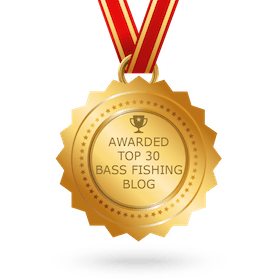1
 Topwater fishing provides anglers a top-notch fishing adventure. With the lure perched on the water’s surface, anglers can watch their fish zero in on its target, lurch out of the water, and snatch the bait. Whether you’re a seasoned topwater pro or a beginner, these tips are sure to help you enjoy a heart-pounding adventure and kick off this year’s pursuit of the Georgia Bass Slam. Just make sure to grab your fishing license before heading to your favorite fishing hole.
Topwater fishing provides anglers a top-notch fishing adventure. With the lure perched on the water’s surface, anglers can watch their fish zero in on its target, lurch out of the water, and snatch the bait. Whether you’re a seasoned topwater pro or a beginner, these tips are sure to help you enjoy a heart-pounding adventure and kick off this year’s pursuit of the Georgia Bass Slam. Just make sure to grab your fishing license before heading to your favorite fishing hole.

1. The early morning and late afternoon anglers get the fish.
Bass are more likely to be in the shallow areas of a pond, lake, or river during the first and last few hours of daylight. With fish already near the top of the water, fishing in the early morning or late afternoon increases the chance of getting the fish’s attention. Pro tip: This tip works on both cloudy and sunny days on the water!
2. Check the weather and water temperature before you head out.
Beginning when water temperatures hit the low 60s, topwater fishing starts heating up! Also, be sure to check the weekly forecast. If a front is headed your way and the barometer is falling, fish will feed on the surface just ahead of it.

3. Match the hatch.
Make sure your bait matches the prey bass are hunting for. Walking bait and poppers tend to get more bites in early spring. As waters warm, buzz bait becomes the favorite – especially of trophy-sized bass. If you’re in an area with shad, use walking bait closely resembling the injured shad that bass are feeding on.

4. Choose the best lure for water conditions.
If fishing murky water, try using a bright, noisy buzz bait to make sure fish can easily see it. With a buzz bait, do not set the hook when the fish hits. Just keep reeling until you feel the fish, then sweep a hookset. As summer approaches and the water becomes clearer, make sure you mix in some clearer colors.
5. Adjust your fishing line to the lure.
Monofilament, 10-12-pound line is great for poppers and walking baits. For buzz baits, a heavier 14-17-pound line works best, and you can even mix in some braided line if fishing heavy vegetation.
6. Have a rod with the correct action.
A 7’ to 7’3” rod is ideal. You’ll want a medium-action rod with some give at the tip to provide more action as you work the lure – especially with walkers and poppers. Many folks actually prefer fiberglass rods for topwater fishing. The lighter tip will also let the fish inhale the lure and keep you from pulling the treble hooks out of the fish’s mouth as it is fighting. For buzz baits, a medium-heavy rod with a flexible tip will allow you to get a big fish out of cover.











